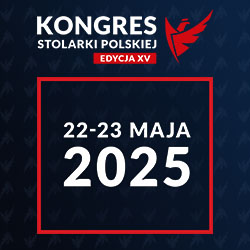Open Access (Artykuł w pliku PDF)
Detection of heat defects of the ETICS system in quasi-stationary conditions
dr hab. inż. Paweł Krause, Politechnika Śląska, Wydział Budownictwa
ORCID: 0000-0002-8398-1961
Adres do korespondencji: Ten adres pocztowy jest chroniony przed spamowaniem. Aby go zobaczyć, konieczne jest włączenie w przeglądarce obsługi JavaScript.
DOI: 10.15199/33.2022.06.03
Oryginalny artykuł naukowy
Streszczenie. W artykule przedstawiono wstępne wyniki badań rozkładu temperatury na powierzchni ściany zewnętrznej z imperfekcjami systemu ETICS, prowadzonych w quasi-stacjonarnych warunkach pomiarowych. Badania wykazały zmianę rozkładu temperatury w obrębie defektów cieplnych o zróżnicowanych szerokościach oraz nieznaczny wpływ występującej dyslokacji cieplnej. Uzyskane wyniki wskazują na konieczność prowadzenia dalszych pomiarów w warunkach rzeczywistych.
Słowa kluczowe: system ETICS; imperfekcje cieplne; badania termowizyjne; warunki quasi-stacjonarne.
Abstract. The article presents preliminary results of tests of temperature distribution on the surface of an external wall with imperfections of the ETICS system, carried out in quasi- -stationary measurement conditions. The research showed a change in the temperature distribution within thermal defects of different widths and a slight influence of the occurring thermal dislocation. The obtained results indicate the necessity to conduct further measurements in real conditions.
Keywords: ETICS system; thermal imperfection; thermovision research; quasi-stationary conditions .
Literatura
[1] Fouad NA. Bauphysik Kalender 2017. Wilhelm Ernst & Sohn, Berlin 2017.
[2] Cao X, Dai X, Liu J. Building energy-consumption status worldwide and the state-of-the- -art technologies for zero-energy buildings during the past decade. Energy and Buildings. 2016; 128: 198 – 213.
[3] Richter T,Winkelmann-Fouad S.Anwendung des U-Wertes als Kenngröße für Wärmetransportvorgänge. Bauphysik-Kalender 2005, p. 249 – 295, Ernst & Sohn, Berlin 2005.
[4] Klemm P. i in. Budownictwo ogólne, tom 2, fizyka budowli. Arkady, Warszawa 2005.
[5] Kysiak A. Wpływ błędów wykonawczych na trwałość systemu docieplenia metodą ETICS. Seria: Budownictwo o zoptymalizowanym potencjale energetycznym.Wydawnictwo Politechniki Częstochowskiej. 2014; 2: 29 – 37.
[6] Fouad NA, Richter T. Leitfaden Thermografie im Bauwesen: Theorie, Anwendungsgebiete, praktische Umsetzung. Fraunhofer IRB-Verlag, Stuttgart 2006.
[7] Krause P. Analiza imperfekcji cieplnych systemów ETICS z uwzględnieniem konwekcji wewnątrz ściany. Wydawnictwo Politechniki Śląskiej, Gliwice 2021.
[8] Aissani A, Chateauneuf A, Fontaine JP, Audebert Ph. Quantification of workmanship insulation defects and their impact on the thermal performance of building facades.Applied Energy. 2016; 165: 272 – 284.
[9] Ambrosini D, Sfarra S, de Rubeis T, Nardi I, Perilli S. Laboratory measurements to evaluate the impact of defects on the conductance of building insulation materials. Conference: XXXIV UIT Heat Transfer Conference (2016).
[10] Raicu A. IR-Thermografie im Bauwesen − Aufstellung eines Leitfadens zurAnwendung der Infrarotthermografie bei instationären Temperaturverhältnissen zur Feststellung versteckter Baufehler. Bauforschungsbericht F 2374. Fraunhofer IRB Verlag (2000).
Przyjęto do druku: 27.05.2022 r.
Materiały Budowlane 06/2022, strona 31-33 (spis treści >>)
































